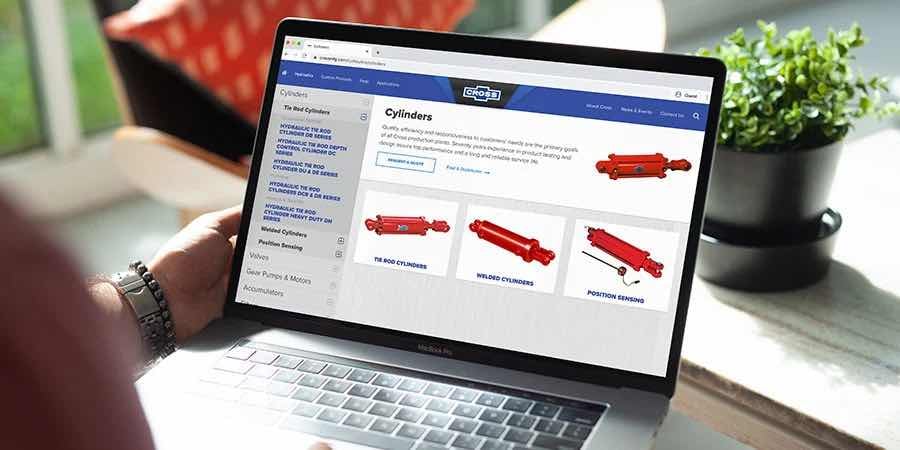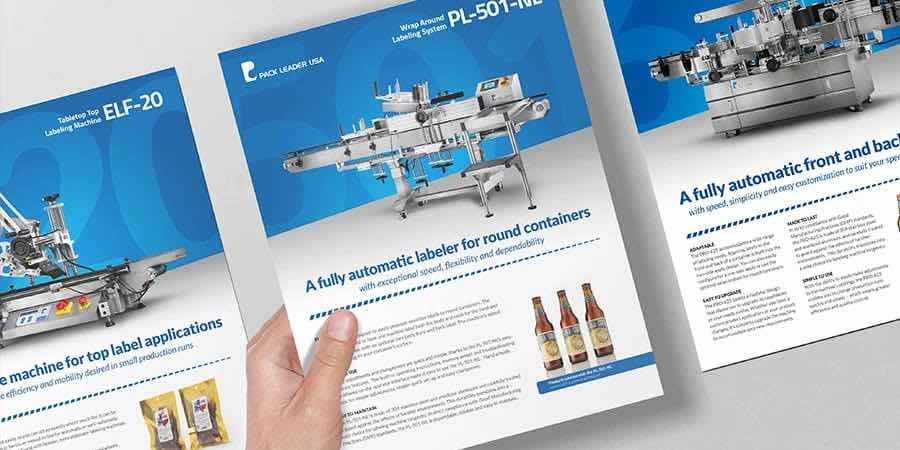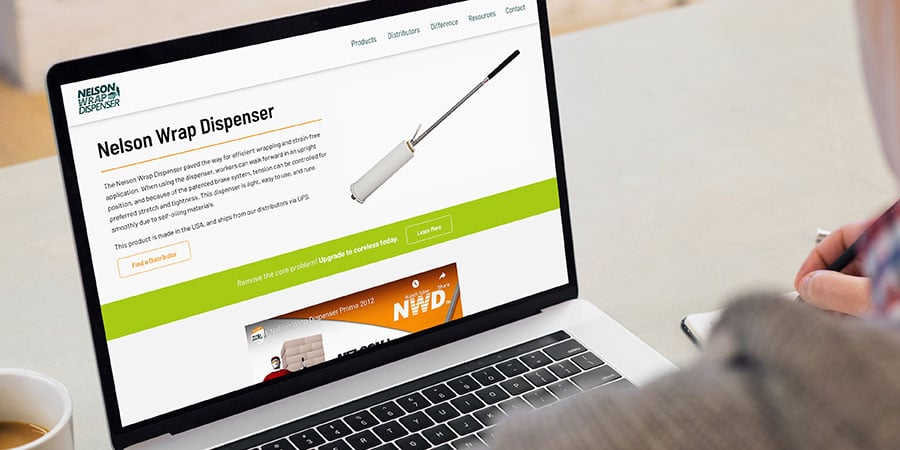Here’s what you need to get website traffic, convert qualified leads, and close more deals.
We know manufacturing websites aren't the same as traditional websites. A manufacturer's website has to do some serious work when resonating with its target audience. But, when a website design for manufacturers is done right, you're left with a lead-generating machine that works for you 24/7 to drive business growth.
If you're an industrial manufacturer, here's a list of the top six components you need to have on your website if you're going to have an edge on the competition:
Let's dive in to understand each a little more.
1. Implement an intuitive navigation to help your audience find the right solution to their problem.
This is the most common issue we see when working with manufacturing businesses. And honestly, we get it. Complex and bogged down site structures are easy traps to fall into when marketing your products online. No one knows your products better than you do, but sometimes this becomes the pitfall. Manufacturers tend to want their website structure set up in ways that make sense to them instead of looking at them through the lens of their audience.
Let's face it. If someone can't easily navigate your website, they're not going to waste their time trying. You know you wouldn't. I know I wouldn't. And it's not fair to expect your audience would either. You need clear paths for visitors so they can find the solutions that you offer.
An important piece of advice we often give is NOT to use complex or internal language and expect site visitors to understand. It's critical to focus on your customers' needs and how they use websites to find what they need. Knowing the terms that your customer uses should significantly impact top-level category naming and site structure.
For example, we often see businesses categorize their navigation by series or product names. While these are solutions to problems, they're meaningless to customers.

Instead, the primary navigation should be organized in a way that customers would understand. They should be able to find what they need intuitively. In this particular example, we would consider organizing the navigation by type of floor cleaning or maybe by cleaning solution types like steam, chemical, etc. At the end of the day, the best manufacturing websites are the ones that can clearly and easily guide their customers to the solution to their problem.

2. Create relevant content consistently to showcase your solutions.
We know it isn't easy to follow a regular schedule of updating digital content if it's not something you're used to doing. However, if you're looking for consistent lead generation, you must regularly update and optimize your website and create and publish new content.
A blog is a great way to start. Creating valuable content regularly will not only help with search engine optimization (SEO) but will be helpful to people who need what you're offering. Here are some helpful blog article prompts:
- What are the most frequently asked questions that your sales team gets?
- What are the top problems your target audience deals with?
- What trends are arising in your industry?
- What innovations are happening inside your industry?
Once you're regularly creating blog posts, you can start working on more in-depth, long-form content like white papers, e-books, and guides. The benefit to working with more in-depth content is that it usually provides more value to your website visitors, which means you can ask for something in return, like email addresses — a vital conversion point in the buyer’s journey.
3. Don't waste opportunities to convert interested prospects.
This is another common mistake we often see when working with website designs for manufacturers. Even if you do a great job explaining how you solve your audiences' problems, if you don't provide a way for them to convert or buy, they're not going to turn into customers.
If you've already done the hard work of getting visitors to your website, don't leave opportunities at the door by not asking them to take action. We recommend giving them a clear way to buy. Don't make it difficult for them to understand how to get your product. Your primary call-to-action (CTA) should be asking visitors to take the next step in purchasing.
At minimum, every page on your website should offer some kind of CTA. We also recommend adding secondary CTAs on website pages. Remember, you've already done the work of getting them to your site. Now it's time to make sure you're capturing their information.
4. Use landing pages to convert prospects into leads.
Just like CTAs, landing pages are critical for conversions. There are many ways you can accomplish this. Here are a few things to consider when crafting a high-performing landing page.

- Title or headline: Titles and headlines must be well crafted. You only have seconds to capture the attention of your reader, so keep them clear and simple, effectively communicating the value you provide.
- Hero images: The hero image (image at the top of the page) needs to compliment the landing page’s title and message. The imagery you choose should help readers understand how their work will improve after implementing your product or solution.
- Persuasive copy: Remember, B2B audiences don’t have much time to decipher clever or vague copy. Be direct and to the point. Make sure you include the benefits of your offer and how their life could improve.
- Lead capture form: Keep your page forms as simple as possible. Don’t ask for more information than is necessary. Research shows the number of form fields required to complete is directly tied to the number of submissions received.
5. Don't make website visitors search for information. It should be easy to find.
When working on website designs for manufacturers, we know it's critical to include technical information and specifications about products. Manufacturing websites must make it easy for prospects to find product-specific details if they're going to consider making a purchase.
This can be done in various ways, but knowing your audience, you'll need to choose the best way for them to process this information. How do they need to see product specs, comparisons, and more? Here are a few ways to displaying product specifications:
On page product tables with filtering abilities

Downloadable PDFs or spec sheets

Written out product descriptions or bullet points

6. Use a consistent visual system to represent your brand accurately.
The best visual system for your brand will depend on your industry and product offerings. Currently, trends lean toward simple, straightforward designs that focus on helping customers differentiate and understand products.
A great way to represent a brand on social media, websites, and printed collateral is through high-quality product photos. Your manufacturing business is primarily about one thing – your products and the problems they help solve for your customers. You need to present those products in the best possible way so that customers can see and understand why your product is what they need.
When analyzing your visual systems (logo, fonts, color schemes, photos, etc.), remember to provide a consistent experience across your entire marketing efforts. Marketing is an exercise in repetition. People need to consistently be reminded of your message and how you help to solve their problems. The visual system is an extension of that. Make sure no matter where your customers find you, they can recognize your brand and associate it with your products.
Ready to improve your industrial website?
Many manufacturer websites have opportunities for improvement. We understand it's frustrating to have a website that's not performing as a lead-generating machine for you. But, the good news is that there are ways you can improve it. That's why we recommend downloading our website goals worksheet, so you have clear documentation around what you're looking to achieve with your website and what opportunities you have for improvement.
More reading
Subscribe to Our Blog
Stay up to date with the latest marketing, sales, and service tips.




